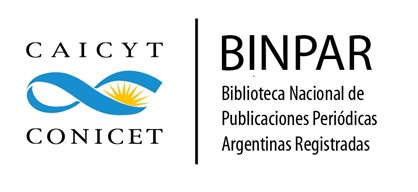On the front page: media, audiences and death function
Keywords:
Journalism, media, crime, security, death functionAbstract
This work starts from considering the central role that the media occupy in the operations of a biopower that exercises the function of killing or that requires a thanatopolitics to ensure one's own life, that is, to attend to the primary place of these in information and communication societies in which the dominant mechanisms are no longer disciplines and biopolitics but security and control, since in them power operates by addressing, before individuals and the population, mainly the "public".
Thus, it proposes to reflect, recovering both some of the main conceptualizations in this regard and results of ethnographic fieldwork developed in the newspaper Crónica, on the ways in which in control societies the media intervene in the modulation of concepts, classifications and hierarchies about lives that are worth more and lives that are worth less, contributing to the distinction and identification of the alien and the own, of the one and the other, of the just and the unjust and to the construction of a border that separates what must live from what can (or should) die, that is, contributing to the legitimization and acceptance of certain deaths, in short, to the existence of a biotanatopolytic.
For while it is clear that the media are not the sovereign nor do they exercise the power to kill that was previously an attribute of this, the truth is that they exercise the power to legitimize certain conceptions about death and the dead and fulfill, like the agents of other institutions, sovereign functions (they build public, mark the norm, etc.), appealing to socio-cultural models that make possible their integration or recognition in the daily life of multiple agents from imaginaries – political, ethnic, generational, gender, etc. – or from operative concepts such as those of "justice", "crime" or "violence" depending on which these agents act, contradictory and differentiatedly, in the face of death in contemporary Argentina.
Downloads
References
Agamben, Giorgio (1998). Homo Sacer I. El poder soberano y la nuda vida. Valencia: Pre-Textos.
Ariès, Philippe (2002). Historia de la muerte en occidente. Barcelona: El Acantilidado.
Bauman, Zygmunt (1989). Modernidad y Holocausto. Madrid: Sequitur.
Deleuze, Gilles (2005). “Postdata sobre las sociedades de control”. En: Ferrer, Christian (comp.), El lenguaje libertario. La Plata: Terramar.
Elias, Norbert. (1989). El Proceso de la Civilización. Investigaciones Sociogenéticas y Psicogenéticas. México: Fondo de Cultura Económica.
_____________ (1989). La soledad de los moribundos. México: Fondo de Cultura Económica.
_____________ (1997). Os alemães. Río de Janeiro: Jorge Zahar.
Esposito, Roberto (2007). “El enigma de la biopolítica”. En: Bios. Buenos Aires: Amorrortu.
_______________(2005). Immunitas. Protección y negación de la vida. Buenos Aires: Amorrortu.
Fonseca, Claudia y Andrea Cardarello (2005). “Derechos de los más y menos humanos”. En: Tiscornia, Sofía y María Victoria Pita (eds.), Derechos humanos, tribunales y policías en Argentina y Brasil. Estudios de antropología jurídica. Buenos Aires: Antropofagia.
Foucault, Michel (2006). “Suplicio” y “Disciplina”. En: Vigilar y castigar. Buenos Aires: Siglo XXI.
____________ (2005). “Las redes del poder”. En: El lenguaje libertario. La Plata: Terramar.
____________ (1990). “Tecnologías del yo”. En: Tecnologías del yo. Barcelona: Paidós.
____________ (2008). “Derecho de muerte y poder sobre la vida”. En: Historia de la sexualidad 1: la voluntad del saber. Buenos Aires: Siglo XXI.
____________ (1996). Genealogía del racismo. La Plata: Altamira.
____________ (2006). “Clase del 11 de enero de 1978”. En: Seguridad, territorio, población. Buenos Aires: Fondo de Cultura Económica.
Galeano, Diego (2005). “Gobernando la seguridad: entre políticos y expertos”. En: Kaminsky, Gregorio (comp.). Tiempos inclementes. Culturas policiales y seguridad ciudadana. Buenos Aires: Ediciones de la UNLa.
Iacub, Marcela (2004). “Las biotecnologías y el poder sobre la vida”. En: Eribon, Didier (comp.): El infrecuentable Michel Foucault. Renovación del pensamiento crítico. Buenos Aires: Letra Viva/Edelp.
Keane, John (1996). Reflections on violence. Londres: Verso.
Lazzarato, Maurizio (2006). “Los conceptos de vida y de vivo en las sociedades de control”. En: Políticas del acontecimiento. Buenos Aires: Tinta Limón.
Lomnitz, Claudio (2006). Idea de la muerte en México. México: Fondo de Cultura Económica.
Mauss, Marcel (1979). “Sobre la categoría de espíritu humano: la noción de persona y la noción de yo”. En: Sociología y Antropología. Madrid: Tecnos.
Neiburg, Federico (2003). “Intimidad y esfera pública. Política y cultura en el espacio nacional argentino”. En: Desarrollo Económico. Revista de Ciencias Sociales, 170 (43). Buenos Aires: IDES.
Rodríguez, Pablo E. “¿Qué son las sociedades de control?”. Disponible en:
http://www.sociales.uba.ar/wp-content/uploads/21.-Qu%C3%A9-son-las-sociedades-de-control.pdf
Segato, Rita (2007). “Introducción” e “Identidades políticas/alteridades históricas: una crítica a las certezas del pluralismo global”. En: La Nación y sus Otros. Buenos Aires: Prometeo.
Sibilia, Paula (2005). “Biopoder”. En: El hombre postorgánico. Cuerpo, subjetividad y tecnologías digitales. Buenos Aires: Fondo de Cultura Económica.
Downloads
Published
How to Cite
Issue
Section
License
Copyright (c) 2020 Mariana Caviglia

This work is licensed under a Creative Commons Attribution-NonCommercial-ShareAlike 4.0 International License.
La aceptación de un original por parte de la revista implica la cesión no exclusiva de los derechos patrimoniales de los/as autores/as en favor del editor, quien permite la reutilización, luego de su edición (postprint), bajo una Licencia Creative Commons Atribución-NoComercial-CompartirIgual 4.0 Internacional (CC BY-NC-SA 4.0)
Acorde a estos términos, el material se puede compartir (copiar y redistribuir en cualquier medio o formato) y adaptar (remezclar, transformar y crear a partir del material otra obra), siempre que a) se cite la autoría y la fuente original de su publicación (revista y URL de la obra), b) no se use para fines comerciales y c) se mantengan los mismos términos de la licencia.
La cesión de derechos no exclusivos implica que luego de su edición (postprint) en Actas de periodismo y comunicación las/os autoras/es pueden publicar su trabajo en cualquier idioma, medio y formato; en tales casos, se solicita que se consigne que el material fue publicado originalmente en esta revista.
Tal cesión supone, también, la autorización de los/as autores/as para que el trabajo sea cosechado por SEDICI, el repositorio institucional de la Universidad Nacional de La Plata, y sea difundido en las bases de datos que el equipo editorial considere adecuadas para incrementar la visibilidad de la publicación y de sus autores/as.
Asimismo, la revista incentiva a las/os autoras/es para que luego de su publicación en Actas de periodismo y comunicación depositen sus producciones en otros repositorios institucionales y temáticos, bajo el principio de que ofrecer a la sociedad la producción científica y académica sin restricciones contribuye a un mayor intercambio del conocimiento global.






















